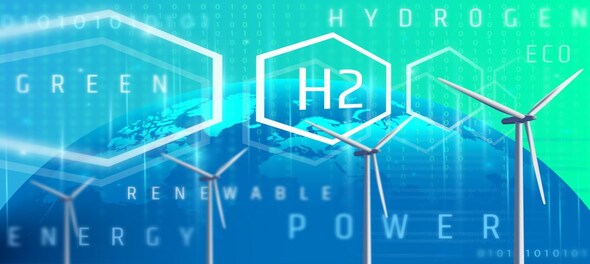
The jamboree of nearly 200 counties in Glasgow has ended with several promises. India committed to being net-zero of emissions by 2070 at the United Nations climate conference, popularly coded as COP26. Prime Minister Narendra Modi laid out the intent to install 500 GW of renewable energy capacities by 2030. It is noteworthy that India is taking the lead to change its sources of fuel from fossil to clean energy.
At present in India, fossil fuels contribute about 60 percent to installed electricity generation capacity, while hydro, wind, solar and other renewable sources account for over 38 percent. The Ministry of Power in a recent statement titled ‘Facts vs Myth’ claimed that through the multi-pronged, comprehensive and aggressive interventions of the Government, the power deficit is near about ‘wiped out,’ consistently over the last three years. This indicates the country is going to be an electricity surplus in the future.
No doubt, it is an exemplary achievement and the Indian economy must take the advantage of uninterrupted electricity across the country. It is the time when the country can utilise the additional renewable energy capacities to replace fossil fuels in industries. Wind, solar and other renewable sources currently contribute 103 GW to the total installed capacity in India. It will leap to 500 GW by 2030 — a scenario with affordable and accessible electricity from green sources.
Recently, the government unveiled a policy where renewable energy can be bundled with thermal under the same Power Purchase Agreement (PPA). This is a welcome move and will boost the renewable sector.
Going forward, there is a need for new low-carbon technologies to meet the net-zero targets. One of the options is to replace all grey and blue hydrogen with green hydrogen as industrial fuel. Currently, hydrogen is utilised widely across refineries, production of urea, steel and other chemical industries.
Worldwide, grey and blue hydrogen are extensively used as industrial fuels. At present, three-quarters of hydrogen consumed globally of around 70 million tonnes is produced from natural gas, according to IEA. Mostly, hydrogen is produced from a methane source — natural gas, in the presence of a catalyst to produce hydrogen, carbon monoxide and carbon dioxide.
On the other hand, green hydrogen is produced by splitting water into hydrogen and oxygen using the electrolysis process. The electricity required to power the electrolyser is sourced from renewable sources such as solar or wind. The entire process is emission-less.
The widespread use of green hydrogen by industries can have multiple benefits. First, it will potentially create enough demand to consume electricity produced from the targeted 500 GW of installed renewable capacities by 2030. Second, with the advancement of global research and innovations, hydrogen can be an affordable source for the storage of energy. At the same time, hydrogen combines with nitrogen results in ammonia, another industrial fuel. Also, liquid ammonia can be transported globally.
Third, industries using green hydrogen or ammonia as their source will help them comply with the carbon border tax mechanism or the RED II directive while exporting to western countries.
The huge potential of green hydrogen is untapped globally. In India, hydrogen appetite is around 6.9 million tonnes a year, which is poised to jump to 12 million tonnes a year by 2030 and 28 million tonnes a year by 2050, according to an Argus report.
The refineries and fertiliser units would continue to be major consumers, as per the report. The electricity tariff from solar PV has nosedived and is significantly lower compared to thermal generation. The cheap electricity can be utilised in electrolysers to produce green hydrogen. This will play a cost advantage, as hydrogen produced from natural gas is expensive as the gas prices are skyrocketing. The IEA analysis points out that with the scale-up of green hydrogen production coupled with the drop in renewable electricity prices, the fuel’s production cost can plummet 30 percent by 2030.
On the path to adopting green hydrogen as a popular fuel, the Government and industry must join hands. The initial demand for green hydrogen can be generated by Government’s push. This can be on the lines of Renewable Purchase Obligation (RPO) that mandated discoms should buy a minimum quantity of electricity from a renewable source. It is one of the critical steps undertaken for the mass adoption of green energy in the country. The initial demand will attract the industry to pour in investments and help in R&D. It will gradually build confidence in the new fuel and help understand the benefits.
This is the time when India can be a front-runner to tap the potential of green hydrogen. In sync with India’s commitment towards net-zero emissions, it will help to leapfrog to a clean and affordable energy source in the future. India is poised to be a leader and not just a follower adapting the change towards green fuel.
—The author, Rajat Seksaria, is Chief Executive Officer, ACME Group. Views are personal
(Edited by : Ajay Vaishnav)
Check out our in-depth Market Coverage, Business News & get real-time Stock Market Updates on CNBC-TV18. Also, Watch our channels CNBC-TV18, CNBC Awaaz and CNBC Bajar Live on-the-go!


In Ayodhya, voters talk of a promise fulfilled and yearning for development
May 17, 2024 2:10 PM
Fight of heavyweights in Sambalpur where farmers, weavers hold the key
May 17, 2024 12:25 PM
Odisha: Fight of heavyweights in Sambalpur where farmers, weavers hold the key
May 17, 2024 10:22 AM
Lok Sabha Election 2024: What rural Delhi wants
May 16, 2024 10:10 PM

